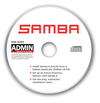« Previous 1 2 3 Next »
What's new in Samba 4
New Dance
Samba 4 has been under development for 10 years. In that same time, the Samba 3.x series also has seen numerous releases and advancements. This parallel development has led to some confusion over the nature of Samba 4; and, some distributions release both samba3 and samba4 packages that can be installed in parallel, with varying degrees of success.
Samba 4.x [1] is a full replacement and upgrade to Samba 3. Undoubtedly, it will be used in parallel with existing Samba 3.x installations for some time, but not because of any deficiency in Samba 4. In almost all cases, Samba 4 can be a drop-in replacement for maintained Samba 3.x versions and will continue to function and provide the same services. Samba 4 is not the Samba Active Directory Domain Controller; rather, it is a new version of Samba that provides new and improved services. Therefore, I will refer to the current Samba 4.x release throughout this article simply as "Samba." Version numbers will only indicate a version of Samba other than the current release.
Some of this version confusion arises from the long development time required to bring out the new release. Over the years, various directions were taken and emphases made in the project, even including rumors of a potential fork. However, the project settled successfully on a direction and a method for integrating divergent approaches to the many technical problems that needed to be resolved.
In understanding the current structure of the software and the direction the project has taken, it is vital to reference only current material. The use of older documentation or mail list archives, especially those that reference Samba4 "test" and "alpha" releases, is strongly discouraged. Old mail messages and blog posts will mislead you. Configuration directives and command syntaxes have changed significantly during the evolution of the
...Buy ADMIN Magazine
Subscribe to our ADMIN Newsletters
Subscribe to our Linux Newsletters
Find Linux and Open Source Jobs
Most Popular
Support Our Work
ADMIN content is made possible with support from readers like you. Please consider contributing when you've found an article to be beneficial.






